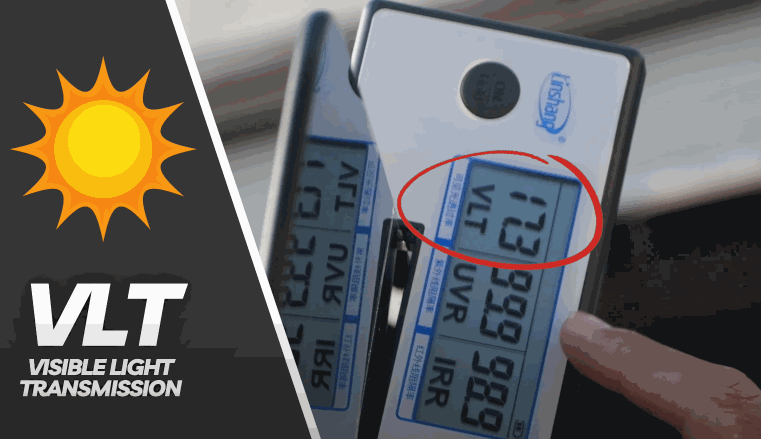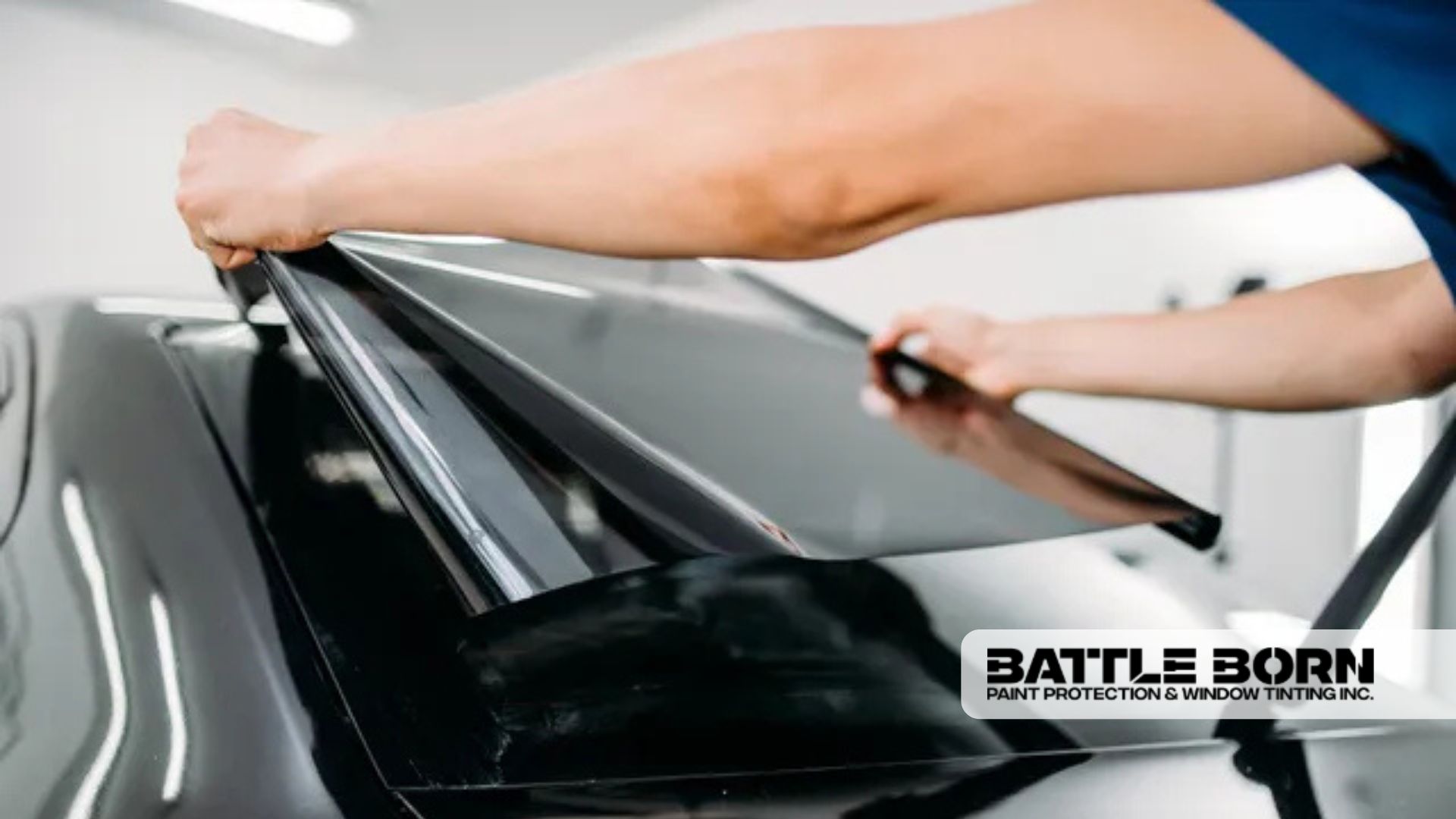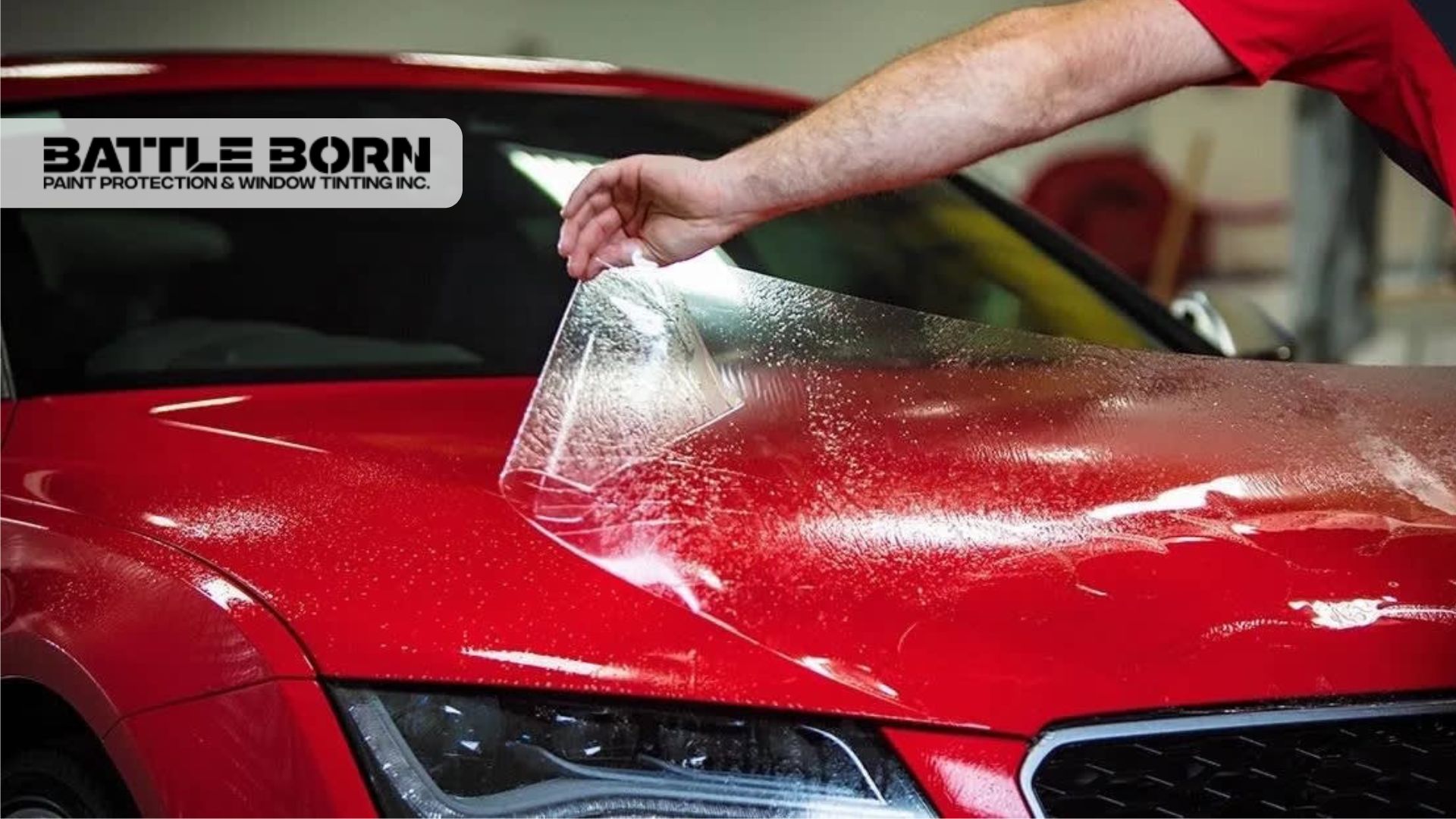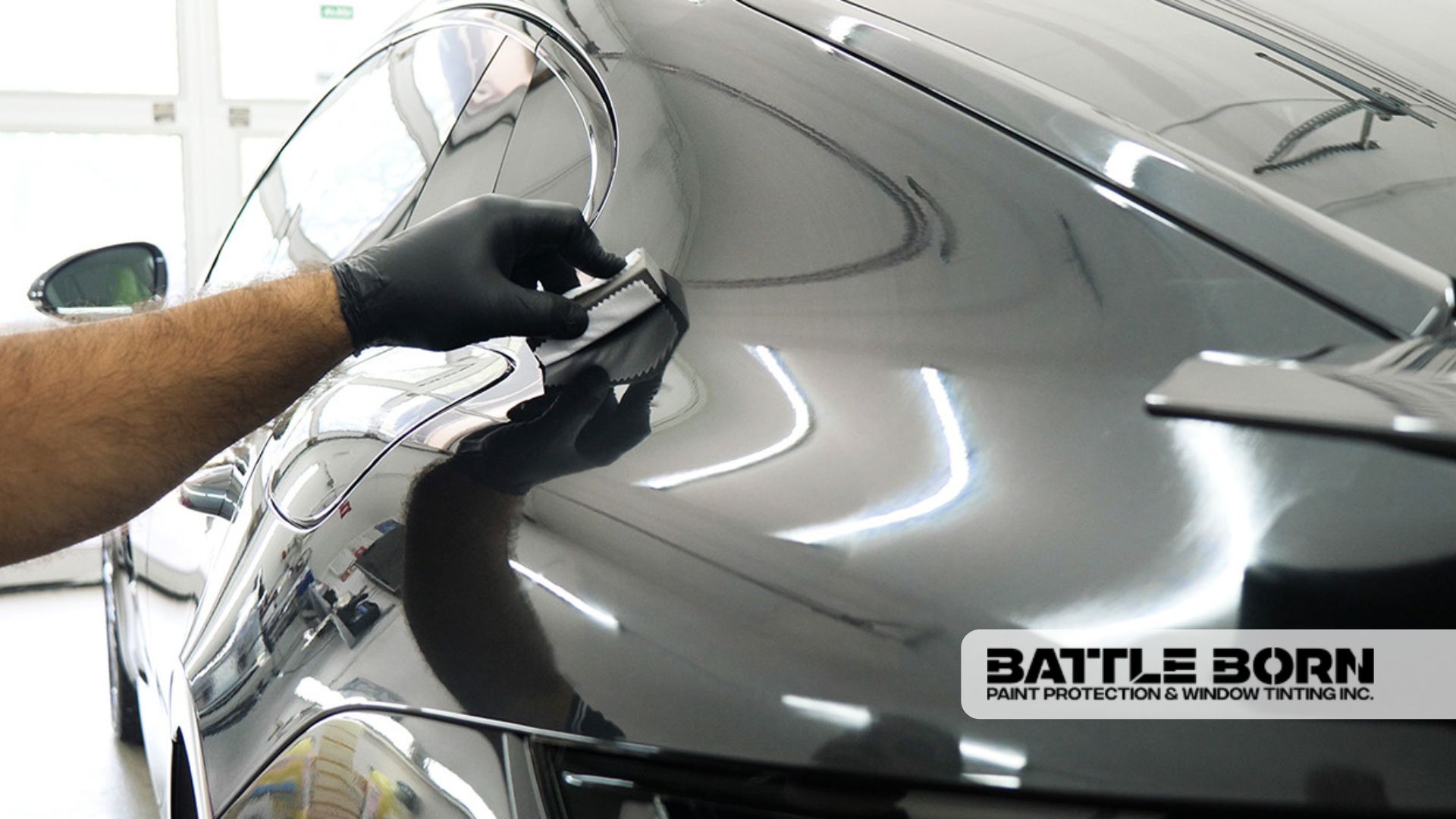Reno’s high desert climate creates driving conditions that push cars — and drivers — to the limit. In the summer, the sun is relentless, heating up interiors within minutes. In winter, the glare off snow on the Mount Rose Highway or along I-80 makes visibility tough. Add Reno’s elevation into the mix, and UV rays become even stronger, which means more strain on your eyes, your skin, and your car’s interior.
That’s why window tint is such a popular upgrade here. For many drivers, it starts as a way to add privacy, but it quickly becomes clear that the real value is comfort and protection. The big question we hear every week at Battle Born is this: is standard tint enough, or is Ceramic Window Tint the smarter choice for Reno?
Standard Tint at a Glance
Standard tint usually refers to dyed or basic metallic films. Dyed film darkens the glass and cuts down some of the harsh brightness, while metallic film adds reflectivity and modest heat rejection. Both are affordable entry points, which is why they’re common in Reno. They give you privacy, they change the look of your vehicle, and they provide a baseline of UV protection.
The problem is durability and performance under Reno’s conditions. Dyed films have a tendency to fade or turn purple after a few years of constant sun exposure. Metallic films hold up better but often interfere with GPS, cell service, or even garage openers — not ideal when you rely on those devices daily. And when it comes to heat, neither option is particularly effective. On a July afternoon, when your car has been sitting in the sun at a ballgame or parked at Meadowood Mall, you’ll still open the door to an oven.
Standard tint can be a short-term solution if you’re on a budget or mainly want added privacy. But for long-term comfort and real heat rejection, it usually leaves Reno drivers wanting more.

Ceramic Tint at a Glance
Ceramic Window Tint is designed differently. Instead of relying on dyes or metals, it uses advanced ceramic particles that absorb and block infrared heat and harmful UV rays. That technology makes a real difference in Reno’s conditions.
Why drivers notice it right away
- The cabin stays noticeably cooler, even on 100-degree days.
- UV protection helps prevent sun damage to skin and fading of seats and dashboards.
- Visibility stays sharp both day and night, without distortion.
Unlike standard films, ceramic doesn’t fade or discolor, and it doesn’t interfere with electronics. For drivers who spend time on US-395, Pyramid Way, or making trips up to Tahoe, that means less glare, less heat, and more comfort every single drive.
At Battle Born, most of us choose ceramic for our own vehicles, because it’s the one option that actually stands up to Reno’s sun and elevation over the long run
What Matters Most in Reno
Reno’s climate is tough on vehicles, and window tint has to do more than just look good. The elevation in the Truckee Meadows means the UV index is stronger than in many other cities, and that extra exposure takes a toll on both drivers and interiors. Over time, unprotected dashboards, leather seats, and trim can crack or fade, especially when a car spends hours parked outside.
Summer brings the biggest challenge: cabin temperatures that skyrocket within minutes. Anyone who has left their car outside at Meadowood Mall or at a summer event downtown knows how uncomfortable it feels to step back inside. Winter, on the other hand, brings its own problem — sunlight bouncing off Sierra snow makes visibility difficult, even during short trips up Mount Rose Highway or back from Tahoe.
At Battle Born, we work with these realities every day. That’s why we’ve tested different films on our own vehicles before recommending them. We know which ones hold up to Reno’s heat, glare, and dry air, and Ceramic Window Tint has proven time and again to be the solution that lasts.

Comparison Between Both Options
When drivers ask us about the difference between standard tint and ceramic, we explain it like this:
- Heat control: Standard tint darkens the glass, but ceramic actually blocks infrared heat. The difference is obvious the first time you get into your car on a 100-degree day.
- UV protection: Both types offer some level of UV defense, but ceramic delivers nearly complete protection. That means better skin safety and much less interior fading
- Clarity: Standard films can lose their sharpness or change color with time. Ceramic maintains clear, natural visibility day and night.
- Durability: Dyed films often fade or turn purple in Reno’s sun. Ceramic keeps its look and performance for years.
- Technology: Metallic films can interfere with phones or GPS. Ceramic doesn’t affect your devices at all.
Put simply, ceramic is the option designed to do more than just tint. It’s built to withstand the exact conditions we face in northern Nevada.

Nevada Law and Shade Selection
Nevada law sets limits on how dark and reflective your tint can be, and it’s important to stay within those limits to avoid issues during inspections in Washoe County. While the specific percentages matter, the bigger picture is this: your front windows need to allow more visibility, while your back windows and rear windshield have a bit more flexibility.
The goal isn’t just legal compliance. It’s also about safety. Driving through mountain passes at night or on snowy mornings near Lake Tahoe requires clear vision, and choosing a shade that’s too dark can create unnecessary risks.
At Battle Born, we guide every customer through this decision. We take into account your daily routes, where you park, and how much privacy you want. From there, we recommend shades that balance comfort, style, and safety — all while making sure your window tint installation meets Nevada’s legal standards.
Ready to Upgrade Your Ride?
Professional Installation and Care at Battle Born
In Reno’s dry and dusty climate, the quality of the installation makes all the difference. Dust particles in the air can easily get trapped under the film if the work isn’t done in a controlled environment. That’s why at Battle Born we place so much importance on preparation. Every window is carefully cleaned and inspected before we apply any film, ensuring a smooth finish that looks flawless from day one.
Our process is straightforward and designed around your needs:
- Consultation — we listen to what you want, whether it’s more privacy, better heat rejection, or just a cleaner look.
- Film selection — together we choose the right option, from standard films to Ceramic Window Tint, depending on your budget and goals.
- Application — our installers use proven techniques to lay down the film with precision, avoiding bubbles or creases.
- Curing and aftercare — Reno weather plays a role in how long film takes to cure. In the heat of summer, the process is faster; in cooler months, it takes longer. We give you clear guidance for both.
- Warranty support — every installation comes with documentation, and we’re here if you ever need adjustments or help down the line.
Caring for your tint in Reno is simple but important. We recommend waiting the proper curing period before rolling down your windows, using gentle cleaners instead of harsh chemicals, and avoiding abrasive cloths that could scratch the film. Follow those steps, and your tint will stay sharp and effective for years.

Conclusion
Ceramic Window Tint consistently delivers better heat control, stronger UV protection, clear visibility, and color stability, which matters in Reno’s high desert sun, big temperature swings, and bright winter glare. Standard tint can add privacy and reduce glare, but it usually falls short for drivers who spend time on I 80, US 395, or the Mount Rose Highway where heat and glare build quickly.
At Battle Born, we guide you to a legal shade that fits Nevada rules and your visibility needs. Our professional window tint installation focuses on clean prep, precise application, and clear aftercare so your film cures properly and lasts. If you want a cooler cabin, protection for your interior, and comfortable drives from the Truckee Meadows to Lake Tahoe, schedule a quick consultation. We will match the right film to your budget and help you get it done right the first time.
BATTLE BORN PAINT PROTECTION AND WINDOW TINTING
4.9 
Window tinting service in Reno, Nevada



